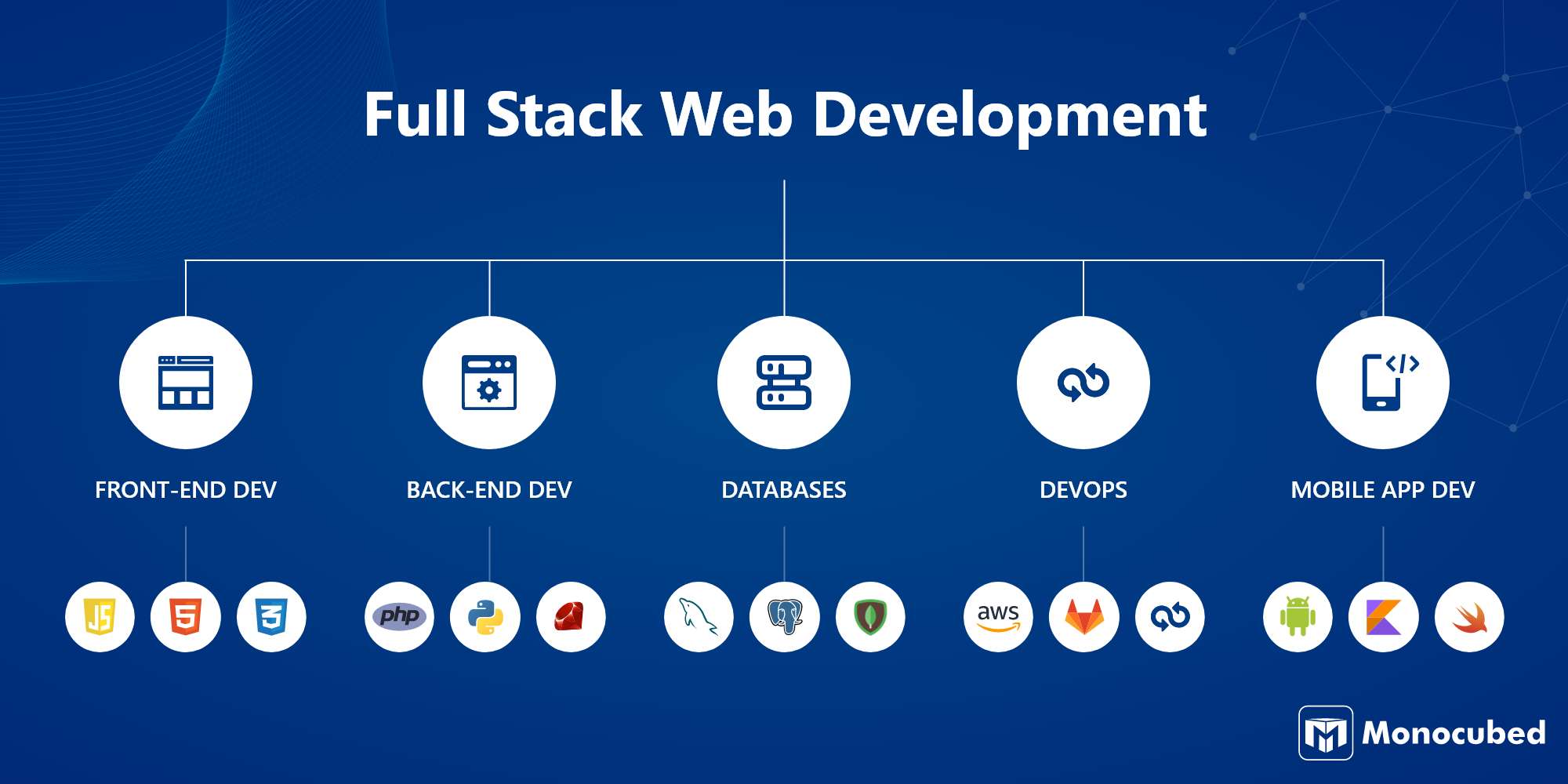Case Journeys
Exploring intriguing stories and insights from around the world.
Full-Stack Development: The Swiss Army Knife of Tech Skills
Unlock the secrets of full-stack development—your ultimate toolkit for mastering tech skills and boosting your career!
What is Full-Stack Development and Why is it Essential in 2023?
Full-stack development refers to the practice of working on both the front-end and back-end of web applications. This means that a full-stack developer is skilled in all layers of development, from the user interface that interacts with customers to the server-side technologies that process data and handle business logic. In 2023, the demand for full-stack developers is at an all-time high due to their versatility and ability to manage entire projects. They can efficiently switch between different technologies and frameworks, making them invaluable in fast-paced development environments where rapid iterations and adaptability are crucial.
Moreover, the rise of cloud computing, mobile applications, and the continuous need for digital solutions have made full-stack development essential. Companies are increasingly looking for developers who can bridge the gap across various stages of the software development lifecycle, allowing for seamless communication and integration between teams. In this evolving tech landscape, full-stack development not only enhances productivity but also fosters innovation by enabling developers to implement end-to-end solutions that meet user needs effectively.

Top 10 Tools Every Full-Stack Developer Should Know
As a full-stack developer, having the right tools at your disposal is crucial for efficient and effective software development. The landscape of web development is constantly evolving, and being well-versed in the latest tools can significantly enhance your productivity. Among the essential tools, version control systems like Git enable developers to manage changes to their codebase effortlessly, while package managers such as NPM allow for seamless management of project dependencies. In addition, utilizing frameworks like React or Angular can streamline front-end development, providing robust structures for creating interactive user interfaces.
On the back end, tools such as Node.js and Express are indispensable for building scalable server-side applications. Database management systems like MongoDB or PostgreSQL should also be on your radar, as they play a critical role in data storage and retrieval. To improve collaboration and project management, platforms such as Jira and Slack are essential for team dynamics. By familiarizing yourself with these top 10 tools, you can significantly enhance your capabilities and ensure success in your development projects.
How to Transition from Frontend or Backend to Full-Stack Development
Transitioning from frontend or backend development to full-stack development can be a rewarding journey that expands your skill set and career opportunities. Firstly, it’s crucial to assess your current skills and identify the gaps in your knowledge. Start by familiarizing yourself with the core technologies used in full-stack development, such as JavaScript frameworks (like React or Vue.js for frontend), databases (like MongoDB or PostgreSQL for backend), and server-side languages (like Node.js or Python). This foundation will create a strong base to build your full-stack knowledge.
Next, prioritize hands-on experience by working on projects that require you to integrate both frontend and backend technologies. Consider contributing to open-source projects or developing a simple application that incorporates an API, a database, and a user interface. As you gain more expertise, focus on understanding how full-stack development workflows operate, including version control, deployment, and testing methodologies. Building a portfolio showcasing your full-stack projects will significantly enhance your employment prospects and demonstrate your capabilities to potential employers.